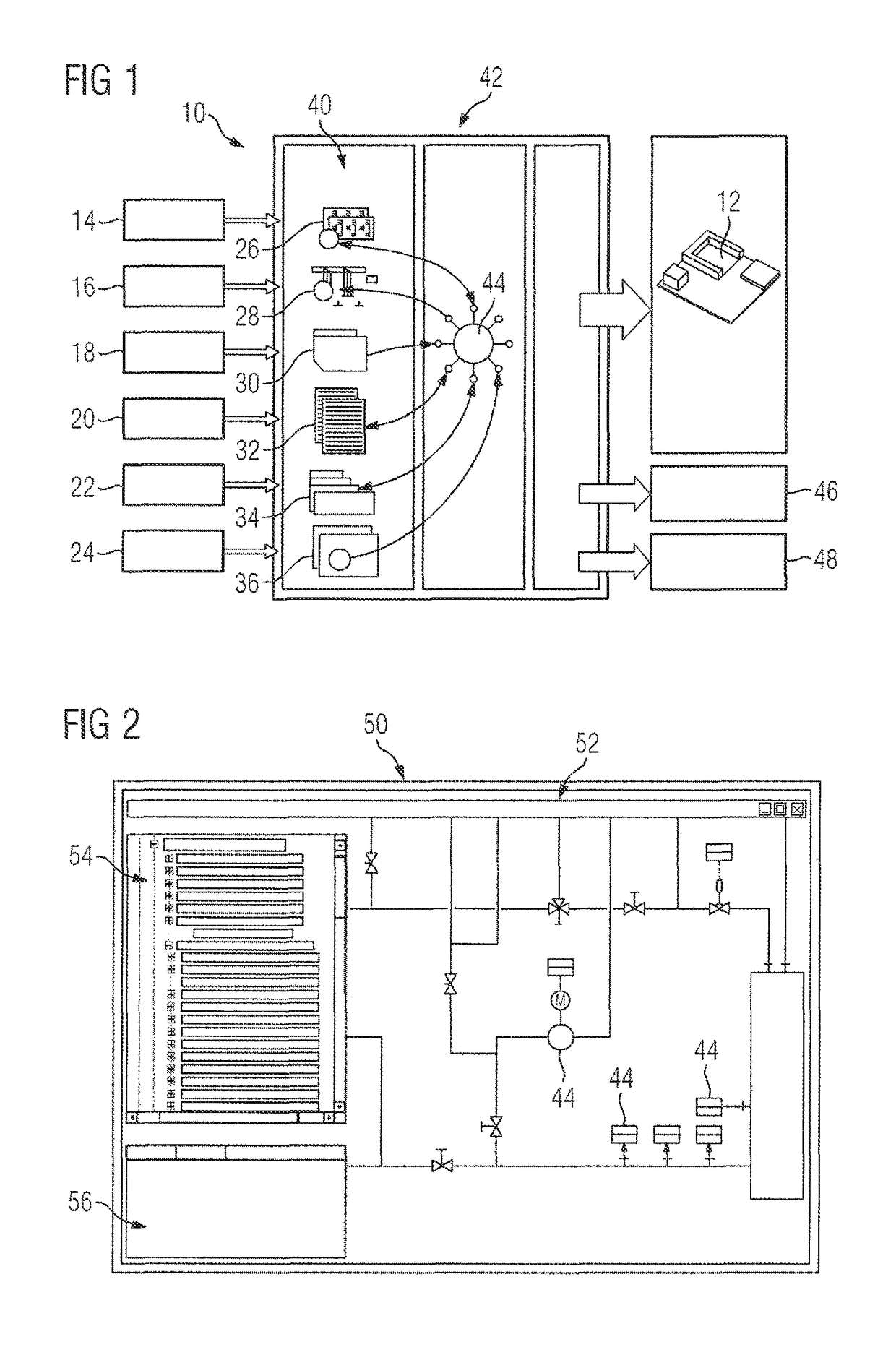Method for monitoring a process and/or production plant
a technology for production plants and processes, applied in the direction of program control, total factory control, instruments, etc., can solve the problems of inconsistentness, condition of data, and safeguarding currentness, so as to facilitate the monitoring of process and/or production plants, the effect of improving efficiency
- Summary
- Abstract
- Description
- Claims
- Application Information
AI Technical Summary
Benefits of technology
Problems solved by technology
Method used
Image
Examples
Embodiment Construction
[0034]The embodiments outlined in more detail below are preferred embodiments of the present invention.
[0035]FIG. 1 shows a schematic illustration of an apparatus 10 for checking a process and / or production plant 12 in accordance with one embodiment of the present invention. The process and / or production plant 12 is planned using a plurality of engineering systems. In the present case, the plant 12 is planned using six engineering systems 14, 16, 18, 20, 22, and 24. The engineering systems 14, 16, 18, 20, 22, 24 relate to different technical areas. By way of example, engineering system 14 can be used to provide a pipeline and installation plant. The engineering system 16 can be used to provide a schematic diagram. The engineering system 18 can be used to provide a three-dimensional plan of the plant 12. The engineering system 20 can be used to provide data sheets pertaining to the components 44 of the plant 12. The engineering system 22 can be used to provide continuous function cha...
PUM
 Login to View More
Login to View More Abstract
Description
Claims
Application Information
 Login to View More
Login to View More - R&D
- Intellectual Property
- Life Sciences
- Materials
- Tech Scout
- Unparalleled Data Quality
- Higher Quality Content
- 60% Fewer Hallucinations
Browse by: Latest US Patents, China's latest patents, Technical Efficacy Thesaurus, Application Domain, Technology Topic, Popular Technical Reports.
© 2025 PatSnap. All rights reserved.Legal|Privacy policy|Modern Slavery Act Transparency Statement|Sitemap|About US| Contact US: help@patsnap.com


